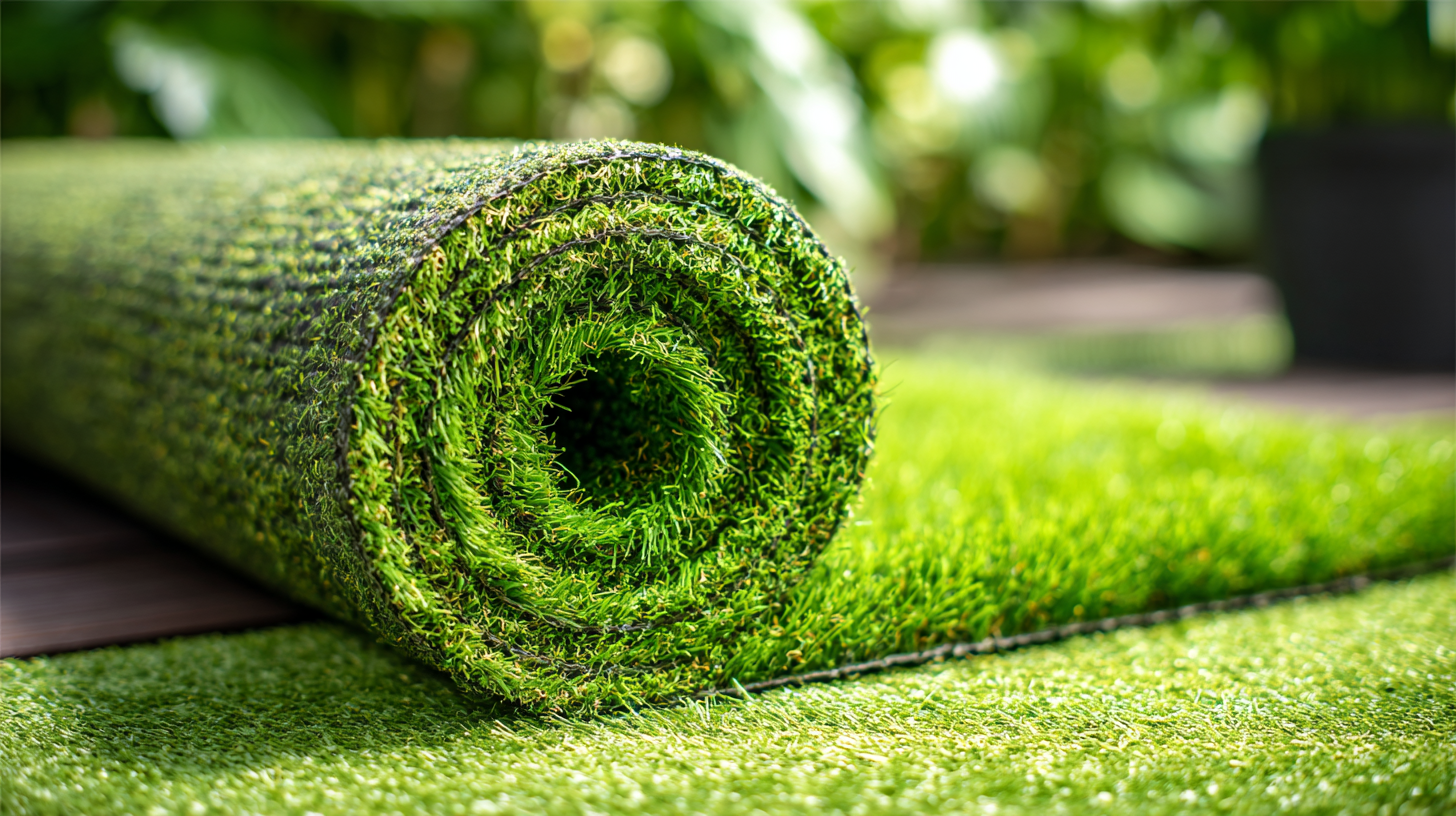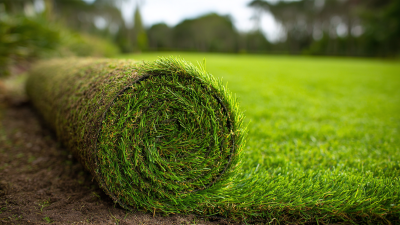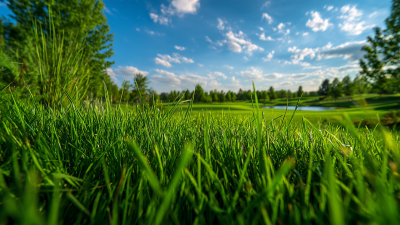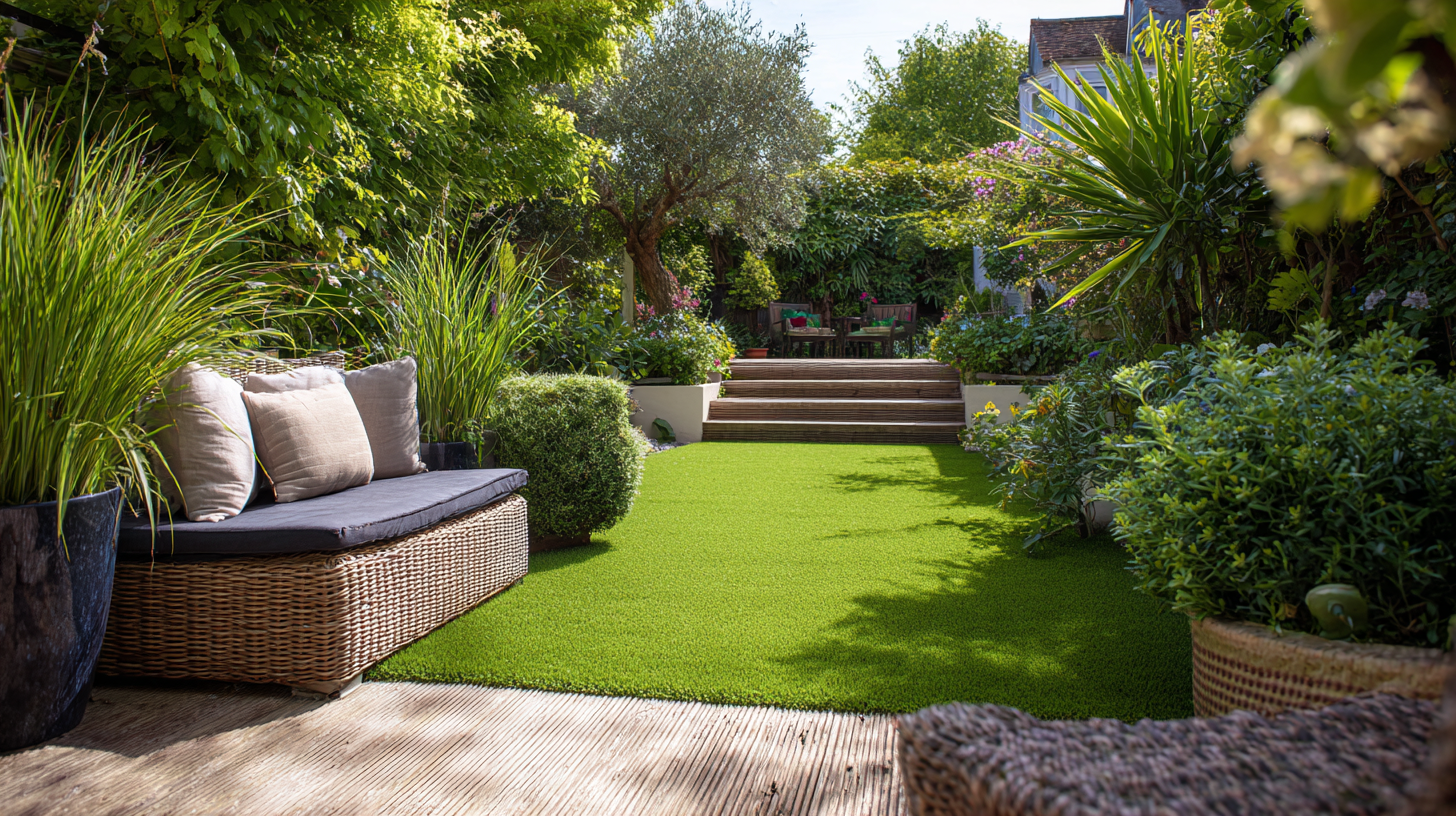 Choosing the right grass turf for your outdoor space is a crucial decision that can significantly impact the aesthetic and functionality of your landscape. According to the National Association of Landscape Professionals, well-maintained grass turf not only enhances property value by up to 15% but also improves air quality by absorbing carbon dioxide and releasing oxygen. Moreover, research from the U.S. Environmental Protection Agency indicates that lawns can absorb rainwater, reducing runoff and promoting groundwater recharge.
Choosing the right grass turf for your outdoor space is a crucial decision that can significantly impact the aesthetic and functionality of your landscape. According to the National Association of Landscape Professionals, well-maintained grass turf not only enhances property value by up to 15% but also improves air quality by absorbing carbon dioxide and releasing oxygen. Moreover, research from the U.S. Environmental Protection Agency indicates that lawns can absorb rainwater, reducing runoff and promoting groundwater recharge.
With numerous varieties of grass turf available, each suited for different climates and usage patterns, understanding your specific needs—such as sun exposure, soil type, and intended use—becomes essential.
This guide aims to equip you with the necessary insights and strategies to select the most appropriate grass turf that not only fits your environmental conditions but also aligns with your lifestyle preferences.
When selecting the right grass turf for your outdoor space, understanding your environment is paramount. Start by assessing your climate. Different grass types thrive in various conditions; for instance, cool-season grasses such as Kentucky bluegrass perform best in northern climates, while warm-season grasses like Bermuda grass are suited for southern regions. Knowing whether you experience harsh winters or prolonged summers can help you make an informed choice that will ensure healthy and vibrant turf year-round.
In addition to climate, evaluate the sunlight and shade patterns in your yard. Some grasses require full sun, while others can tolerate or even prefer shady areas. Take note of how much sunlight your outdoor space receives throughout the day. Also, consider soil type and drainage capabilities, as these factors affect grass growth. Sandy soils drain quickly and may require more frequent watering, while clay soils retain moisture but may need improved drainage. By considering these environmental aspects, you can choose a grass turf that not only fits your aesthetic preferences but also thrives in its specific surroundings.
When selecting the right grass turf for your outdoor space, understanding the foot traffic patterns is crucial. According to the Turfgrass Council, areas with high foot traffic, such as playgrounds, sports fields, and courtyards, require more durable turf varieties that can withstand wear and tear. For instance, Kentucky bluegrass is favored for its resilience and ability to recover quickly, making it ideal for heavily used lawns. In contrast, fine fescue varieties may be suitable for low-traffic areas due to their fine texture and aesthetic appeal.
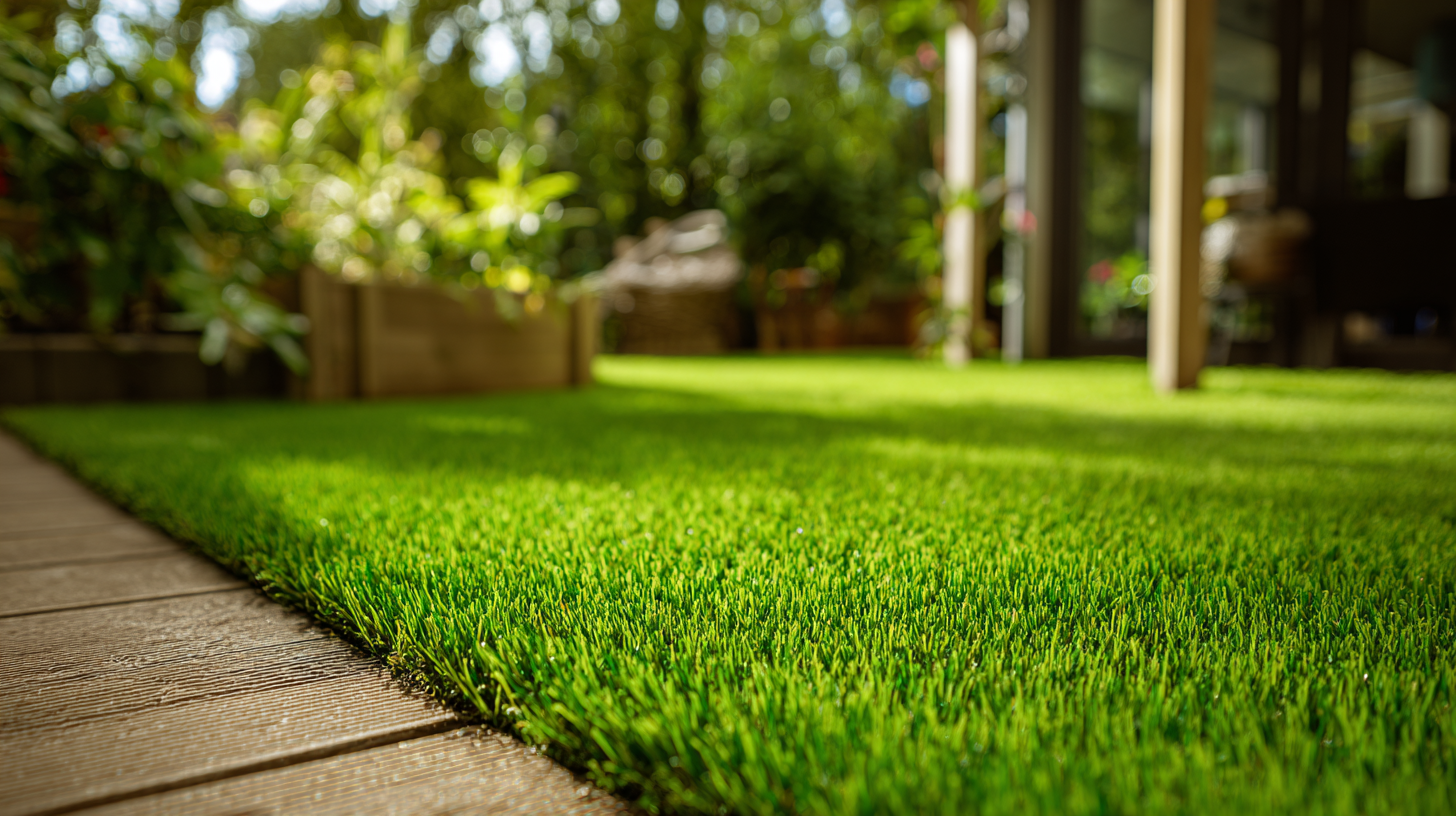
Moreover, a report by the National Turfgrass Evaluation Program highlights that understanding the desired usage of your outdoor space can significantly affect turf choice. Spaces that are frequently used for gatherings or children’s play should prioritize heat and drought resistance, leading to the recommendation of blends that include perennial ryegrass. This blend offers not only durability but also quick germination and establishment, which is essential for maintaining a healthy appearance under high usage. Ultimately, assessing foot traffic and use cases ensures that you select turf that meets both functional and aesthetic needs for your outdoor environment.
When selecting the right grass turf for your outdoor space, it is essential to evaluate the climate conditions that affect grass growth. Different types of grass thrive in varying weather patterns, temperature ranges, and soil conditions. For instance, warm-season grasses, such as Bermuda and zoysia, perform best in areas with high temperatures and plenty of sunlight, while cool-season varieties like fescue and Kentucky bluegrass are better suited for cooler climates and shaded areas.
In addition to choosing the right type of grass, innovative strategies can help maintain healthy turf in response to climate challenges. Recent studies have explored climate-adaptive solutions, such as subsurface water storage and capillary irrigation systems that utilize rainwater for cooling artificial turf. These methods can significantly reduce the impact of heat stress during summer months, ensuring optimal growth and resilience of your lawn. Understanding local climate patterns and employing these strategic approaches can lead to a lush, sustainable outdoor space that thrives year-round.
Choosing the right grass turf is essential for creating a beautiful and functional outdoor space. Different grass types offer varying benefits depending on factors such as climate, soil type, and intended use. For instance, cool-season grasses like Kentucky bluegrass are ideal for northern climates and provide thick, lush lawns, making them popular for residential areas. According to the Turfgrass Water Conservation Alliance, Kentucky bluegrass retains moisture well, requiring 20% less water than some other species during the summer months, thus promoting sustainability.
On the other hand, warm-season grasses such as Bermuda and Zoysia thrive in southern regions, delivering excellent drought resistance and heat tolerance. Research from the University of Georgia indicates that Bermuda grass can tolerate heat and moderate foot traffic, making it a suitable choice for recreational areas like sports fields and golf courses. Additionally, Zoysia grass can grow in low-nutrient soils, which can reduce the need for extensive fertilization and maintenance, making it an eco-friendly option. By comparing these different grass turf types, homeowners can make informed decisions that best suit their outdoor needs while also considering environmental impacts.
| Grass Type | Sunlight Requirement | Soil Type | Watering Needs | Traffic Tolerance | Benefits |
|---|---|---|---|---|---|
| Bermudagrass | Full Sun | Sandy to Loamy | Moderate | High | Drought-resistant and resilient to heavy use |
| Fescue | Partial Shade to Full Sun | Clay to Loamy | Moderate | Moderate | Shade tolerant and remains green year-round |
| Kentucky Bluegrass | Full Sun to Partial Shade | Loamy | High | Moderate | Luxurious appearance and self-repairing capability |
| Zoysiagrass | Full Sun to Partial Shade | Sandy to Loamy | Low to Moderate | High | Thick mat, drought-resistant, and tolerant of heat |
| Perennial Ryegrass | Full Sun to Partial Shade | Loamy to Clay | Moderate | Low | Fast germination and suitable for quick patches |
When budgeting for the installation and maintenance of grass turf, it's essential to consider both initial costs and long-term expenses. According to the Turfgrass Water Conservation Alliance, synthetic grass can range from $5 to $20 per square foot for installation. While this may seem significant upfront, many homeowners find that the longevity and low maintenance requirements of artificial turf can offset these costs. For example, natural grass typically requires annual spending of $800 to $1,200 for maintenance, including mowing, watering, and fertilization, whereas synthetic options may need only occasional brushing and rinsing, reducing yearly expenses considerably.
In addition to installation costs, it's also important to take into account the potential savings on water bills. The Environmental Protection Agency states that switching from natural grass to artificial turf can reduce landscape water use by approximately 50%. For households in areas affected by drought or with stringent water regulations, this can lead to significant savings. Thus, when selecting the right grass turf for your outdoor space, a thorough budgeting process considering both immediate and future costs can yield a favorable return on investment.
